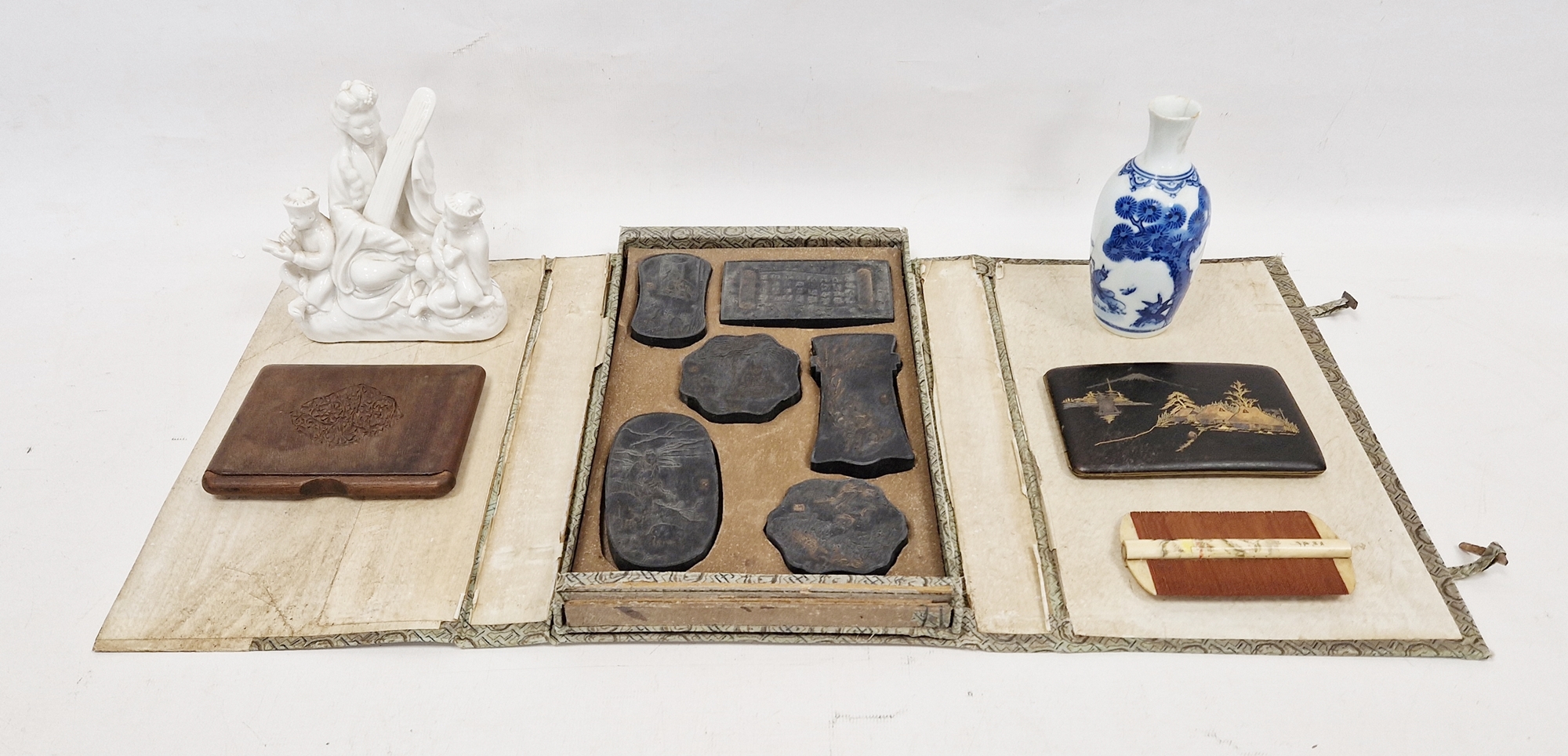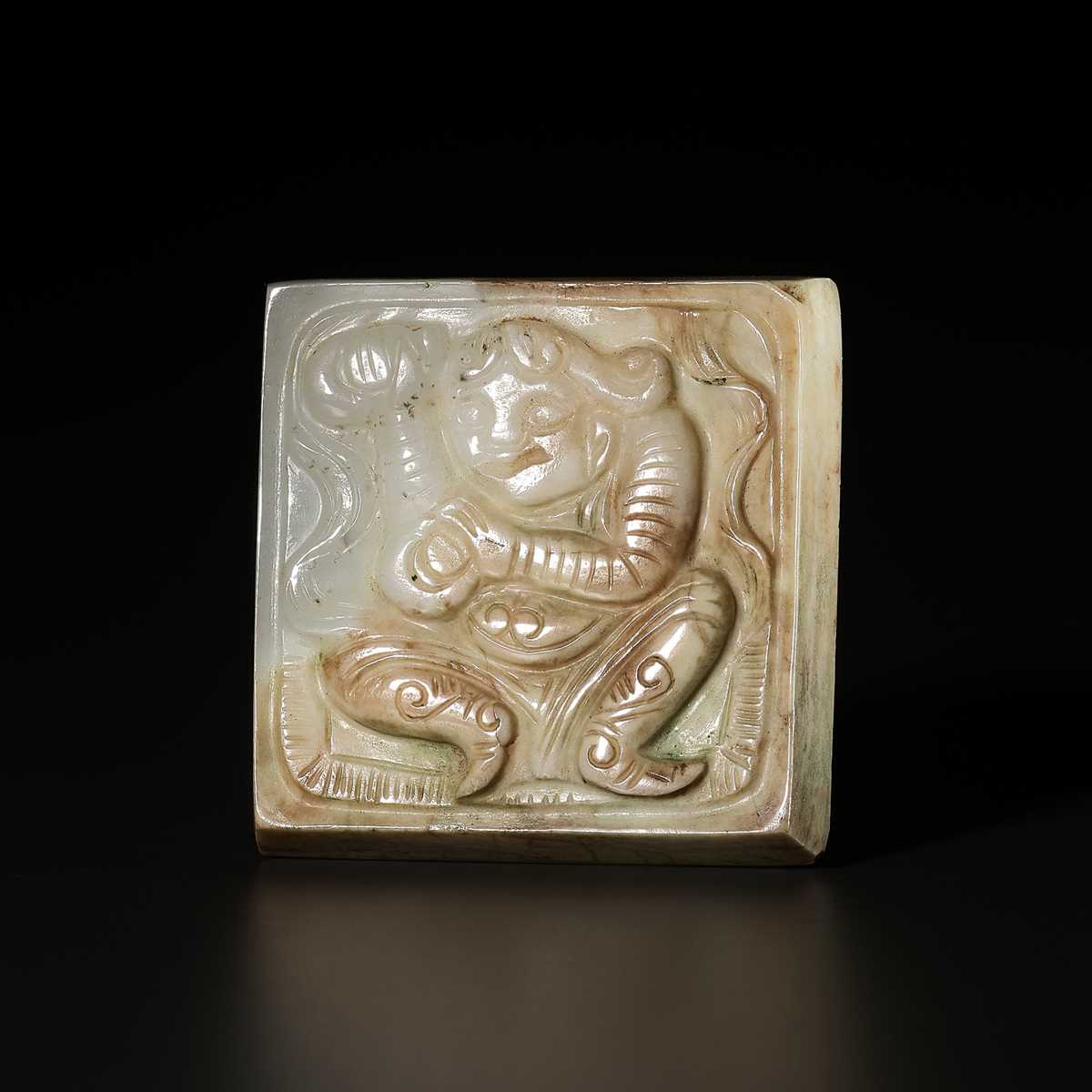CHINESE MUSICIAN SET Han Dynasty, 206 BC-220 AD A group of three ceramic tomb figures representing female musicians; each is shown kneeling and wearing long sleeved robes painted in red to the upper part and with a black belt across the middle; each has the hair pulled up into a flat bun on the top of the head; one figure holds a drum, another a cymbal and another a small harp. 1.7 kg total, 18cm each (7"). Finely modelled. [3] Provenance Property of a London gentleman; acquired before 1980. Footnotes China provides some of the earliest traces of music making. These are mainly in the form of well-preserved musical instruments, the tangible evidence of music. Over several millennia, musical instruments from regional indigenous traditions as well as from India and Central and West Asia were assimilated into the mainstream of Chinese music. Some of the most ancient instruments have been retained, transformed, or revived throughout the ages and many are in common use even today, testifying to a living legacy of a durable art. This legacy is frequently celebrated in the visual arts of China, documenting rituals and celebrations, or as status symbols of those whose lives were enhanced by the resonate sounds of instruments. Ancient Chinese people believed they would go to an afterlife when they died. So they placed miniature versions of things for everyday use in tombs for the deceased, such as these musicians, hoping that the dead could enjoy the next life like when they were alive. These grave objects gradually developed into funerary artworks and reflected the social standing of the deceased.
CHINESE MUSICIAN SET Han Dynasty, 206 BC-220 AD A group of three ceramic tomb figures representing female musicians; each is shown kneeling and wearing long sleeved robes painted in red to the upper part and with a black belt across the middle; each has the hair pulled up into a flat bun on the top of the head; one figure holds a drum, another a cymbal and another a small harp. 1.7 kg total, 18cm each (7"). Finely modelled. [3] Provenance Property of a London gentleman; acquired before 1980. Footnotes China provides some of the earliest traces of music making. These are mainly in the form of well-preserved musical instruments, the tangible evidence of music. Over several millennia, musical instruments from regional indigenous traditions as well as from India and Central and West Asia were assimilated into the mainstream of Chinese music. Some of the most ancient instruments have been retained, transformed, or revived throughout the ages and many are in common use even today, testifying to a living legacy of a durable art. This legacy is frequently celebrated in the visual arts of China, documenting rituals and celebrations, or as status symbols of those whose lives were enhanced by the resonate sounds of instruments. Ancient Chinese people believed they would go to an afterlife when they died. So they placed miniature versions of things for everyday use in tombs for the deceased, such as these musicians, hoping that the dead could enjoy the next life like when they were alive. These grave objects gradually developed into funerary artworks and reflected the social standing of the deceased.







.jpg)


.jpg)



Testen Sie LotSearch und seine Premium-Features 7 Tage - ohne Kosten!
Lassen Sie sich automatisch über neue Objekte in kommenden Auktionen benachrichtigen.
Suchauftrag anlegen